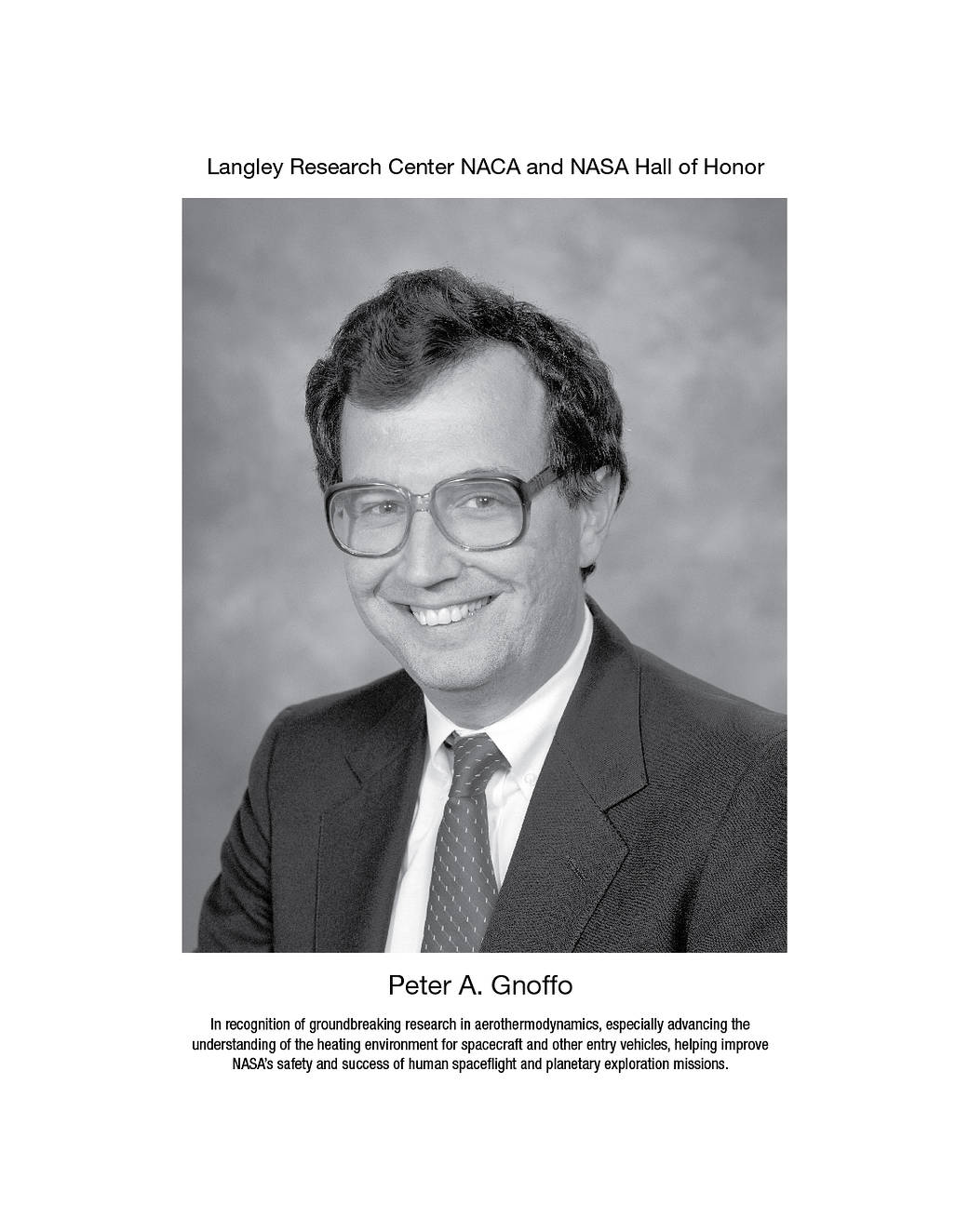
Peter A. Gnoffo
Dr. Peter A. Gnoffo (1952-) is an international expert in aerothermodynamics who has made significant advancements in the better understanding of the heating environment for spacecraft and other entry vehicles, which helped improve the safety and success of NASA’s human spaceflight and planetary exploration missions.
Gnoffo was born in Baltimore, Maryland. He earned a bachelor’s in aerospace engineering from the Polytechnic Institute of Brooklyn in 1974, a master’s in mechanical and aerospace engineering from George Washington University in 1977 and a doctorate in mechanical and aerospace engineering from Princeton University in 1980.
Gnoffo started at NASA Langley in 1974. One of the most significant accomplishments in his more than 40-year career was the development in the 1980s of the Langley Aerothermodynamic Upwind Relaxation Algorithm (LAURA) code, the first complete aerothermodynamics simulation software code for NASA reentry vehicles. It remains one of NASA’s primary standard computational tools for predicting certain flow fields and aeroheating environments for spacecraft and probes flying through planetary atmospheres.
Gnoffo’s expertise also contributed to the success of the space shuttle program from start to finish. He analyzed early surface pressure and temperature data, provided modeling and simulation numbers of infrared temperature sensor experiments and did state-of-the-art computational modeling of the fluid dynamic effects for the Columbia accident investigation. Gnoffo also took a lead role for entry aeroheating simulation so the space shuttle could return to flight and provided direct mission support to assess any damage suffered in subsequent shuttle flights.
When NASA went back to Mars with the Pathfinder mission in 1997 Gnoffo’s pioneering computational efforts played a huge part in its success. It was the first time NASA had flown an entry vehicle based solely on computational predictions. Now, computational fluid dynamics are the primary tool for predicting aerodynamic and aerothermal environments for all Mars missions since then.
With NASA working to return to the Moon with the Artemis missions, Gnoffo continued to advance new, pivotal modeling and simulation codes for the Orion crew capsule reentry thermal environments data book before his retirement in 2017.
Gnoffo has written or coauthored more than 100 journal publications and conference papers. He is a fellow of the American Institute of Aeronautics and Astronautics and has served as associate editor of the “Journal of Thermo-physics and Heat Transfer.” He was honored with the NASA Exceptional Scientific Achievement Medal in 1990, the NASA Exceptional Achievement Medal in 1998, the Presidential Rank Award in 2005, the NASA Exceptional Engineering Achievement Medal in 2005, and the NASA Distinguished Service Medal in 2017. Gnoffo also received a NASA Space Flight Awareness award and the “Silver Snoopy,” a special honor given personally by NASA astronauts for outstanding achievements related to human flight safety or mission success.


























